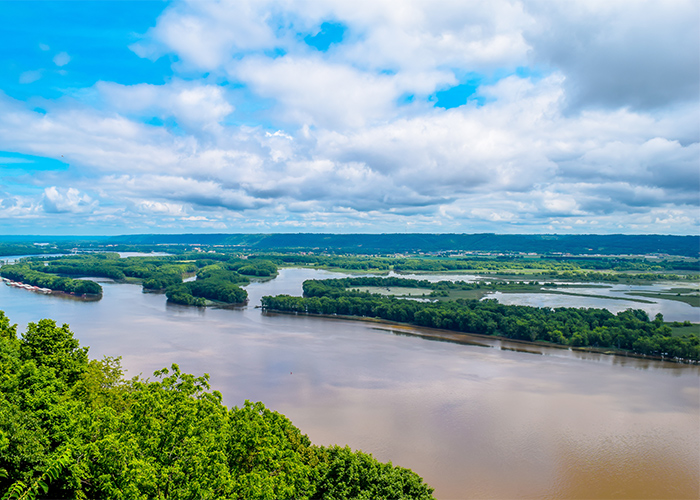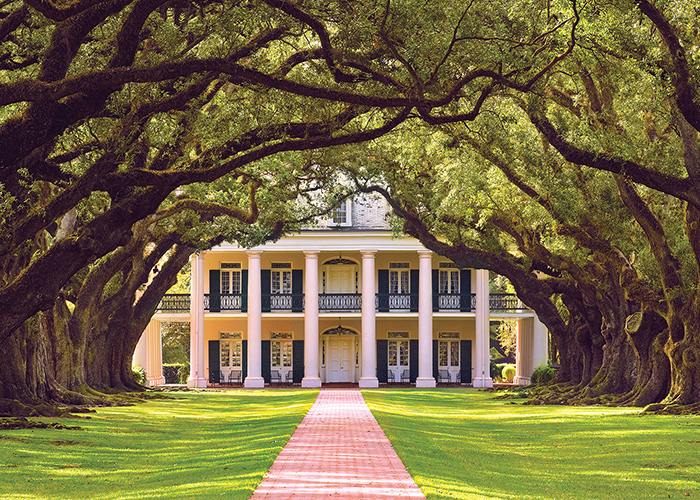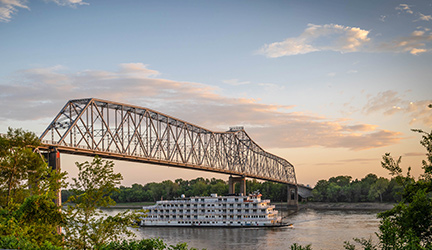Long before interstates crisscrossed the country or railroads cut through the heartland, the Mississippi River was America’s first highway—a mighty, winding waterway that shaped the nation’s growth, culture, and commerce. Spanning over 2,300 miles from Lake Itasca in Minnesota to the Gulf of Mexico, the Mississippi has always been more than just a river; it’s a living, breathing artery that has fueled the American spirit of exploration and progress. This route of the Mississippi River has connected communities, driven commerce, and acted as a gateway to opportunity for centuries.

Origins: Why is The Mississippi River More of a Highway?
In the 18th and 19th centuries, the Mississippi River Route was the lifeblood of America’s westward expansion. With its vast network of tributaries, the river connected settlements, fueled commerce, and provided a critical route for trade and transportation. Steamboats chugged up and down its currents, loaded with cotton, timber, and people—all seeking fortune and opportunity in a rapidly growing nation.
By the early 1800s, New Orleans, at the mouth of the Mississippi, had become one of the busiest ports in the world. Goods from the Midwest would float downstream, where they’d be loaded onto ocean-bound ships, ready to travel to far-off markets. Mark Twain, who knew the river well, once wrote, “The Mississippi is well worth reading about. It is not a commonplace river, but on the contrary is in all ways remarkable.” The river was as much a character in his stories as the people who navigated its depths and shallows.
Emerging Culture Along The Mississippi River Road
America’s First Highway: The Mighty Mississippi River also gave birth to a unique blend of music and culinary traditions that shaped American culture. Jazz, blues, and gospel all found their voices in the cities along the river’s banks—places like New Orleans, Memphis, and St. Louis, where each city contributed its distinct flavor. New Orleans, often called the birthplace of jazz, saw the creation of this new genre in the early 20th century, with musicians like Louis Armstrong revolutionizing the sound with brass bands and syncopated rhythms that defined the genre. Meanwhile, Memphis became the heart of the Delta blues, where artists like B.B. King transformed raw emotions into a powerful musical form that spoke to the struggles and hopes of African Americans in the Deep South. St. Louis added its flair with a blend of blues, ragtime, and early rock 'n' roll that influenced the likes of Chuck Berry. These sounds traveled up and down the Mississippi on riverboats, in juke joints, and through radio waves, seeping into the fabric of American music and inspiring generations of artists.
Meanwhile, the river’s diverse communities gave rise to culinary delights that remain iconic today. In New Orleans, Creole and Cajun dishes like gumbo—a rich stew made with seafood, okra, and a dark roux—and jambalaya, a spicy rice dish, reflect the French, Spanish, African, and Native American influences that mingled in this vibrant port city. Memphis became synonymous with barbecue, where pitmasters perfected the art of slow-smoking pork ribs, pulled pork, and brisket, slathered in tangy, sweet sauces that became a hallmark of Southern cuisine. Up in St. Louis, you'll find unique twists like toasted ravioli and gooey butter cake, reflecting the city’s Italian and German heritage.

The Importance of The Mississippi River Route
Along the river’s route, communities from different backgrounds—French, African, Native American, German, Italian, and more—brought their own traditions, spices, and recipes, creating a melting pot of flavors that reflect the rich history of the Mississippi River. This mix of music and food tells the story of a region where cultures came together to define a vibrant and ever-evolving American identity. The Mississippi River, with its winding path through the heart of the country, was not just a highway of goods and people but also of ideas, sounds, and tastes that continue to resonate today.
The Mississippi remains a critical artery of commerce, moving over 500 million tons of cargo annually. From grain to petroleum, it’s still an essential route for moving the goods that keep America running. But more than that, it’s a reminder of where we’ve been—a testament to a time when the river was the main drag in a vast, untamed land. Follow the path of the Mississippi River on any of our exciting itineraries in this region to relive the great history of this iconic waterway.


